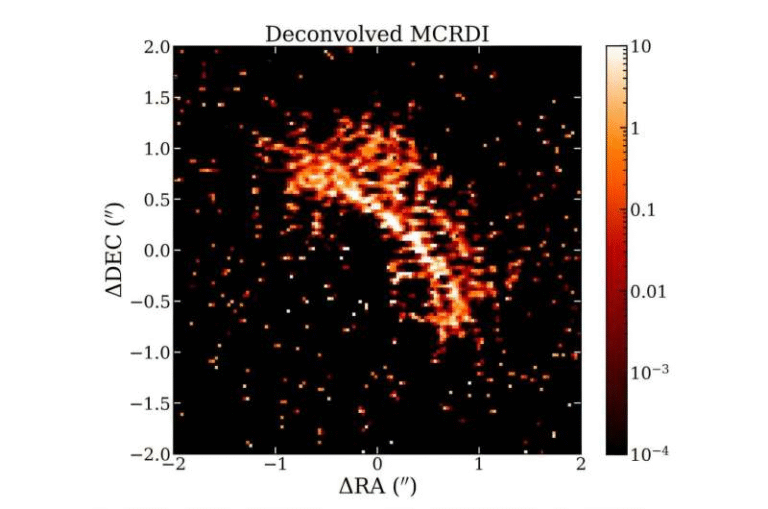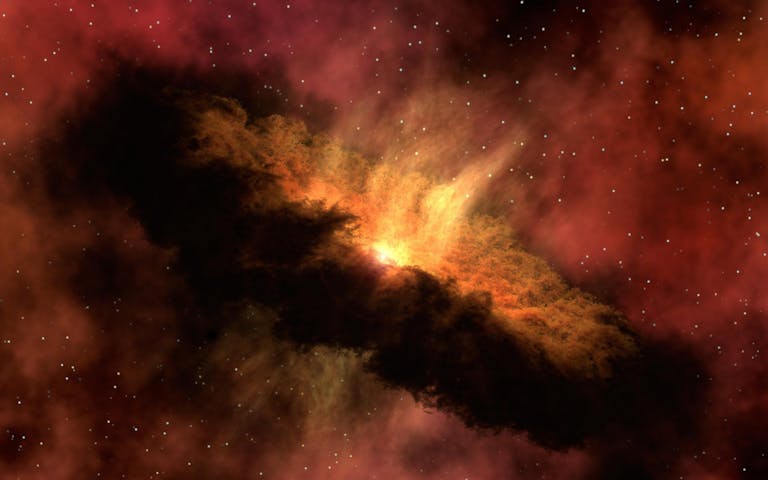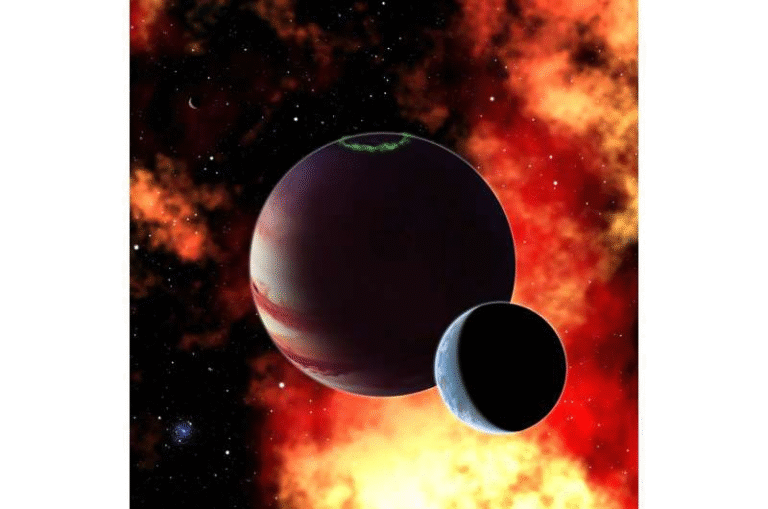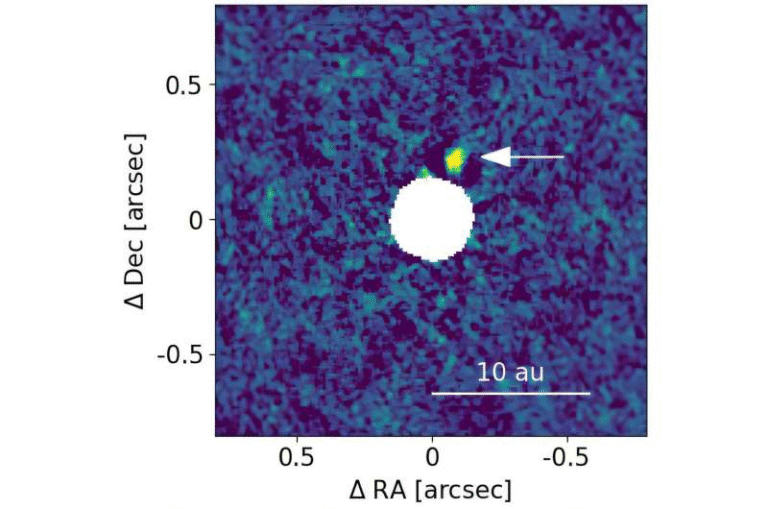Astronomers Confirm a Wandering Black Hole in a Nearby Dwarf Galaxy
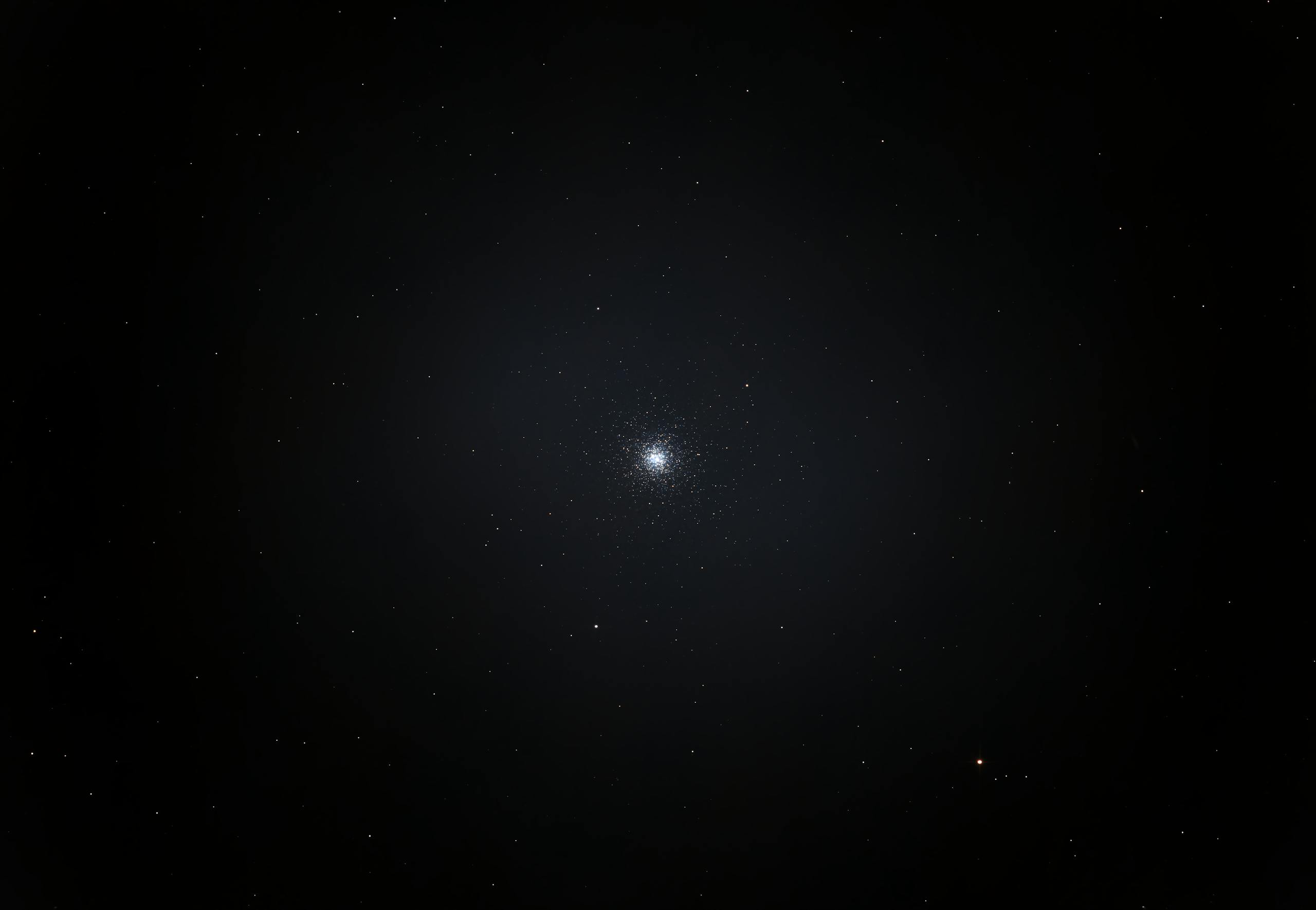
Astronomers have made a remarkable discovery: a wandering black hole in a dwarf galaxy about 230 million light-years away from Earth. Unlike the usual black holes that sit at the center of galaxies, this one has been caught drifting nearly a kiloparsec (about 3,000 light-years) from its galactic core while still actively producing radio jets. This makes it one of the clearest and most convincing examples of an off-center, accreting black hole found so far.
This finding was published on September 4, 2025, in Science Bulletin by a team led by Dr. Tao An from the Shanghai Astronomical Observatory, along with collaborators from Spain, Sweden, and other institutions. The discovery sheds new light on how black holes might form, grow, and even influence galaxies outside of their centers.
The Galaxy Where It Was Found
The black hole resides in a dwarf galaxy called MaNGA 12772-12704, which is located about 230 million light-years from us (redshift z ≈ 0.017). Astronomers used data from the Mapping Nearby Galaxies at Apache Point Observatory (MaNGA) survey, which is part of the Sloan Digital Sky Survey, to look at the galaxy’s structure.
While the galaxy itself appeared relatively normal and didn’t show obvious signs of recent mergers or the presence of a dual black hole system, something stood out: its radio emissions were not aligned with its geometric center. Instead, they were offset by about 0.94 kiloparsec (2.68 arcseconds).
Follow-up observations using the Very Long Baseline Array (VLBA) at frequencies of 1.6 GHz and 4.9 GHz confirmed the displacement and revealed something even more striking: the source contained a radio-bright core with a brightness temperature exceeding 1 billion kelvins, along with a jet extending about 2.2 parsecs (7.2 light-years) toward the southeast. These are hallmark features of an active galactic nucleus (AGN), powered by a black hole that is feeding on surrounding material.
Long-Term Variability
To confirm that this wasn’t just a supernova remnant or another kind of cosmic impostor, the team examined archival radio data spanning from 1993 to 2023. Over these three decades, the source displayed irregular brightness variations—sometimes becoming brighter, sometimes dimmer. This type of variability is typical of sustained accretion onto a black hole, but not consistent with the steadily fading light of a supernova.
This long-term behavior effectively ruled out other explanations and cemented the case for this being a wandering black hole.
Mass of the Black Hole
Using the stellar mass of the host dwarf galaxy and standard scaling relations, the black hole’s mass was estimated to be around 300,000 times the mass of the Sun. That places it firmly in the category of intermediate-mass black holes (IMBHs).
IMBHs are especially intriguing because they are thought to represent a “missing link” between smaller stellar-mass black holes (up to a few tens of solar masses) and the supermassive black holes (millions to billions of solar masses) that sit in the centers of galaxies. Finding one that is off-center and still actively producing jets is a rare and scientifically valuable event.
Why This Discovery Matters
Black Holes Aren’t Always Central
Traditionally, black holes are thought of as the “hearts” of galaxies, anchoring the center and growing by consuming gas, dust, and stars around them. But discoveries like this challenge that picture. Not all black holes stay at the center.
In dwarf galaxies especially, the gravitational pull is weaker. If a galaxy merger or strong gravitational interaction occurs, the black hole can be kicked out of the center. Simulations have shown that black holes in dwarf galaxies can end up displaced by hundreds to thousands of light-years.
This new detection provides strong observational evidence that such displaced black holes are real and can remain active even far from their expected home in the nucleus.
Implications for Black Hole Growth
One of the long-standing puzzles in astronomy is how supermassive black holes managed to form so quickly in the early universe. If black holes can grow and accrete matter outside of galaxy centers, that opens up new pathways for how they might have accumulated mass rapidly.
The study shows that an off-center black hole can still fuel itself and launch jets. This suggests that black hole growth may not be limited to central feeding alone. Instead, multiple “feeding sites” might have existed in young galaxies, allowing black holes to gain mass much more efficiently than previously assumed.
Wandering Black Holes May Be Common
The team examined more than 3,000 dwarf galaxies in the MaNGA survey. Out of these, 628 showed signs of possible AGN activity, and about 62% had offsets from their optical centers. However, only MaNGA 12772-12704 had the clear triple evidence:
- A compact, high-brightness core.
- A parsec-scale radio jet.
- Long-term variability across decades.
This means wandering black holes might not be that rare, but confirming them with strong observational evidence is challenging.
The Role of Jets and Galactic Impact
Even though this black hole isn’t in the center, it still launches powerful radio jets. Jets like these can pump energy back into the surrounding galaxy, heating up gas, altering its motion, and influencing star formation.
This means that wandering black holes can play a role in shaping their host galaxies, even from the outskirts. They’re not just passive wanderers; they are active players in galactic evolution.
How Do Black Holes Wander?
There are several possible explanations for why a black hole might end up displaced:
- Galaxy mergers: When two galaxies merge, their central black holes eventually spiral toward each other. But gravitational interactions can sometimes fling one black hole away from the center.
- Gravitational recoil: When two black holes merge, the emission of gravitational waves can create a recoil “kick” that sends the merged black hole hurtling away from the center.
- Multi-body interactions: In systems with multiple black holes, complex gravitational tugs can eject one of them from the nucleus.
In the case of MaNGA 12772-12704, the galaxy looks fairly undisturbed, with no strong signs of a recent merger. That makes the origin of this displacement a mystery that astronomers still need to solve.
Broader Context: What Are Intermediate-Mass Black Holes?
Intermediate-mass black holes (IMBHs) are a special class of black holes that fall between stellar-mass black holes (a few to a few hundred solar masses) and supermassive black holes (millions to billions of solar masses).
They are important for several reasons:
- They may act as seeds for the growth of supermassive black holes.
- They help us understand how black holes grow across cosmic time.
- They are difficult to find, because they’re not as luminous as AGN powered by supermassive black holes.
The discovery of an IMBH that is active and displaced strengthens the evidence that these black holes do exist and can play an important role in galaxy evolution.
Looking Ahead: The Search for More Wandering Black Holes
This study could be just the beginning. With upcoming telescopes and instruments, astronomers expect to find more wandering black holes. Some of the key future facilities include:
- Square Kilometre Array (SKA): A next-generation radio telescope that will be able to detect faint radio sources across vast regions of the sky.
- Next-generation Very Large Array (ngVLA): Will provide even more detailed radio observations.
- FAST core array in China: The world’s largest single-dish radio telescope, useful for detecting faint radio signatures.
- Extremely Large Telescopes (ELTs): Upcoming optical observatories that will measure galactic centers and structures with unmatched precision.
With these tools, astronomers hope to not only confirm more off-nuclear black holes but also build up a statistical population to understand how common they really are.
Why You Should Care
The discovery of a wandering black hole with jets tells us that the universe is more dynamic than the traditional view suggests. Black holes aren’t just stationary monsters sitting quietly at galaxy centers—they can move, grow, and still light up the cosmos in unexpected places.
This has big implications for our understanding of:
- Galaxy evolution: Even small dwarf galaxies can host active black holes that shape their structure.
- Black hole formation: Off-center growth may explain how black holes in the early universe became supermassive so quickly.
- Cosmic population of black holes: Wandering black holes may be much more common than once thought, waiting to be discovered with future telescopes.
Reference
Research Paper: A jetted wandering massive black hole candidate in a dwarf galaxy
